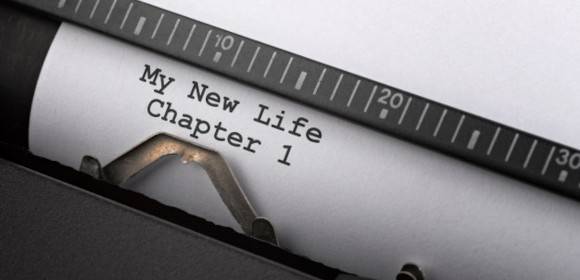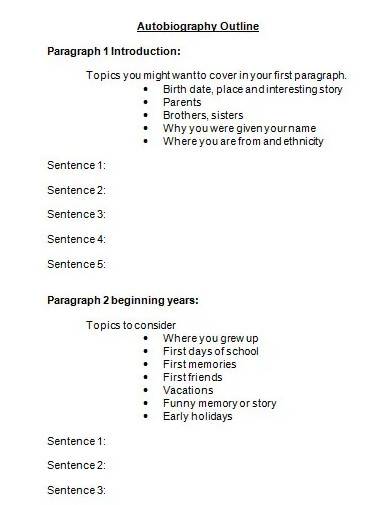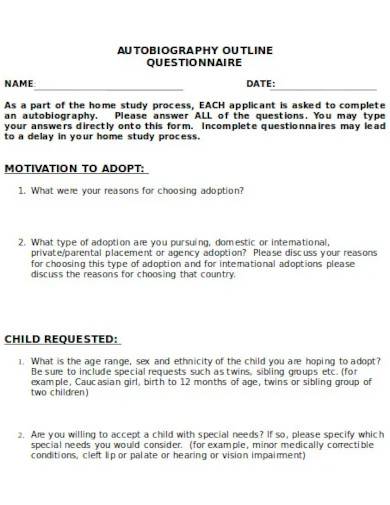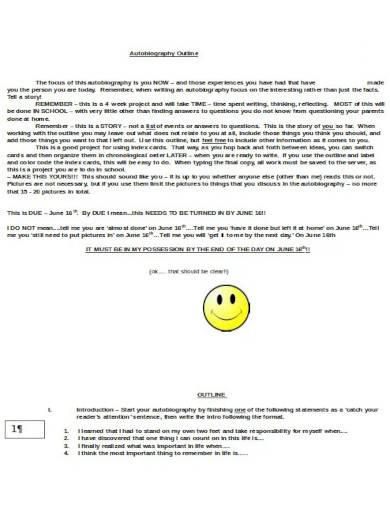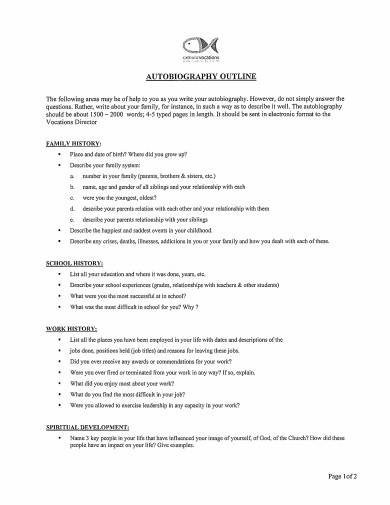Writing any non-fiction story can be a challenging job. As the author, you must tell the real story and share the truth precisely while still making the story enjoyable for the reader. However, not all writers can give readers the satisfaction and interest that they need. If you have a hard time writing and outlining your write-ups, you can use our autobiography outline templates to help you start writing. Read this article below to learn more.
FREE 10+ Autobiography Outline Samples
1. Basic Biography Outline Template
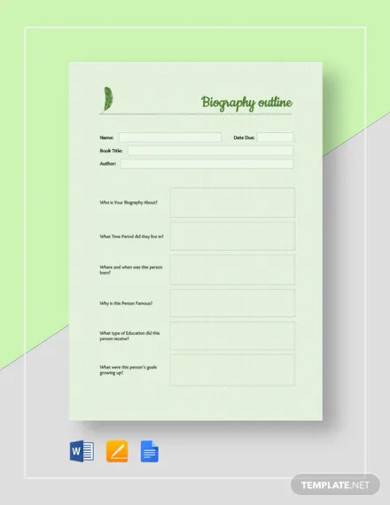
2. Autobiography Book Cover Template
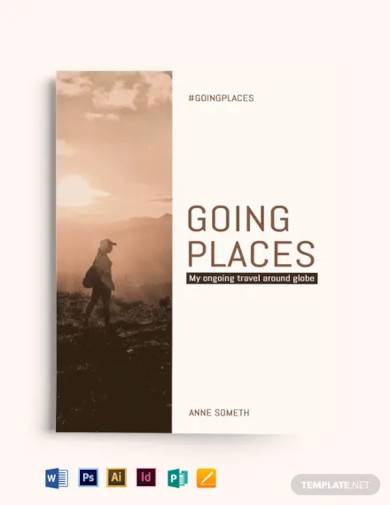
3. Basic Biography Outline Template

4. Short Biography Outline Template
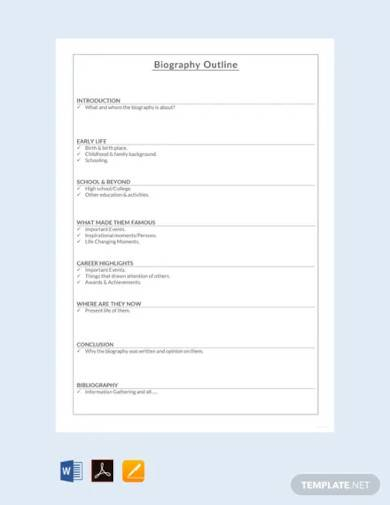
5. Sample Biography Outline Template
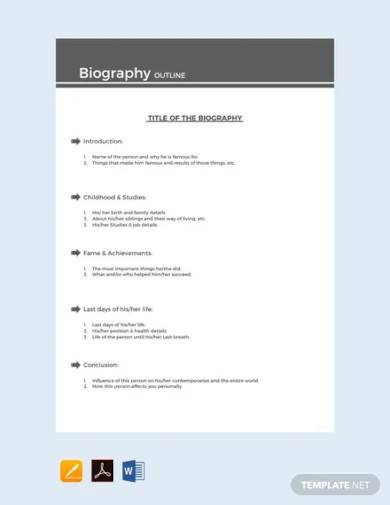
6. Professional Biography Outline Template
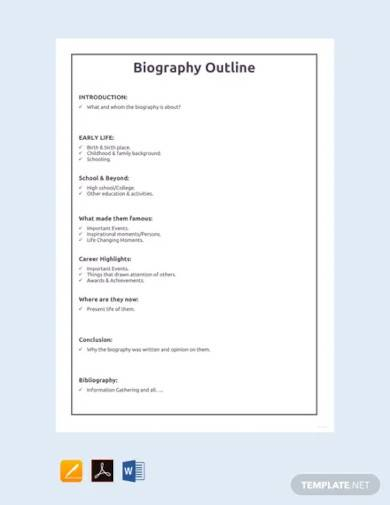
7. Personal Biography Outline Template
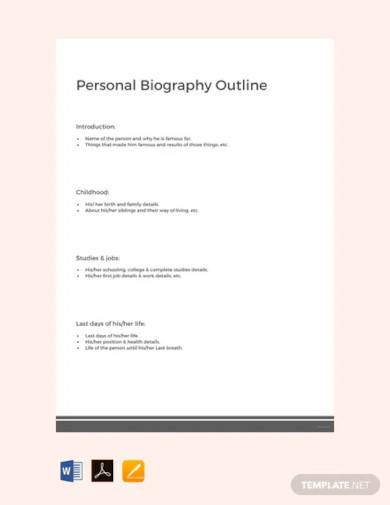
8. Autobiography Outline Template
9. Autobiography Outline Questionnaire
10. Sample Autobiography Outline
11. Autobiography Outline Format
What Is an Autobiography?
An autobiography is a tale about a person’s life, written from the writer’s perspective. Autobiographical writings have a variety of forms. It may be life-long stories that should not be published or a formal book-long autobiography. These remarkable works are letters, diaries, journals, and memoirs. Formal autobiographies give a special kind of biographical truth, a life reshaped by memory, with all the positive and negative omissions and distortions of memory.
What Is the Difference Between Autobiography and Biography?
Autobiographies and biographies are similar in the fact that they’re both telling a story. However, they’re also different in some aspects. An autobiography is the writer’s story, while a biography is a narrative about the events and circumstances of an individual’s life, written by someone other than that person. Typically, people write biographies about a historical or famous person. They can be written with or without the permission of the subject. Since the author tells someone else’s story, biographies are often in the third person’s perspective and have a more formal and analytical tone than memoirs and autobiographies. Like an autobiography, biographies cover the full scope of the subject’s life, which should contain their birthplace’s description, educational qualification, work experience, relationship, death, and more.
How to Write an Autobiography?
The autobiography should include all the most relevant aspects of your life story. It does not mean that it should cover every tiny sliver of minute details; a self-aware autobiographer will take stock of those moments in his own life that might be relevant to themselves, but not to an audience of strangers. Here are some of the main elements to remember, even in your autobiography:
1. Details of Your Origin
Since it is your story, you must include all the details of your life. These details are the information about your entire existence, hometown, birthplace, family background, family members, educational backgrounds and moments, and other stuff related to that. It will help the readers know you more.
2. Significant Experiences
When you are going to write your autobiography, it is also helpful to write something about your personal experiences. Add accounts of any personal experience that influenced your outlook and your approach to life today. It can also help showcase to yourself and let everyone know the real you.
3. Detailed Memories and Episode of Your Personal Life
You can also write details of your memories and episode of your personal life. Often these are the driving factors that your autobiography would be remembered for, the moments that will inspire anyone to pick up your book first. Be sure to give special attention and care to them.
4. Story of Failure
One of the aspects that can attract readers to read your story is how you handle your life’s challenges and failures. After stating your inspirational experiences and moments, you can follow it up with a good narrative of how you get up and responded to the challenges and failures you have faced from the past.
5. Catchy Title
It is also critical to choose or pick a catchy and unique title. Drop the titles like the story of my life, or this is my life. It is because these types of titles are common and overused. Try to think of catchy and unique titles as it can easily get the attention of the readers.
6. First Person Voice
Since it is the story of your life, you must use the first-person voice. Third-person writing may be appropriate for conventional biographies, but it can read as presumptuous or insensitive in autobiographies.
FAQs
What is an autobiography outline?
An autobiography outline is a format or guide on how you should write your autobiography. It usually starts with chapters right from your childhood days, followed by points on your college, higher education, and the life-changing relationship between you, your marital life, your children, your successes, your present life, and your recognition.
What is the purpose of an autobiography?
An autobiography aims to give the readers a first-hand account of the writer’s life and give insights into how they cope with challenges and how these experiences shaped them as a person. Autobiographies are usually inspiring and interesting. That is why most people enjoy reading them.
What are the elements of autobiography?
The important elements in an autobiography are as follows:
- Characters
- Setting
- Details
- Chronological order
- Point of view
- Author’s purpose
What are the key traits of an autobiography?
The key traits of an autobiography are the following:
- Written from a first-person perspective.
- More objective and formal than memoirs, but usually more subjective than a biography.
- A broad scope of a timeline, covering whole life experiences.
- Focused on facts.
- Requires thorough research than memoirs, but less research than a biography.
A good autobiography can bring the readers into the world of the writer. However, writing such autobiographies is not as easy as you might think. It requires a lot of brainstorming and effort to craft a beautiful story that could inspire and attract others. The next time you’re planning to write your story, you can use our downloadable autobiography outline templates. Download it now to get started!
Related Posts
FREE 10+ Obituary Outline Samples in PDF
FREE 10+ Timeline Outline Samples in PDF
FREE 3+ Blog Outline Samples in PDF
FREE 5+ College Essay Outline Samples in PDF
FREE 10+ Script Outline Samples in PDF
FREE 10+ Character Outline Samples in PDF
FREE 10+ Podcast Outline Samples in PDF
FREE 10+ Novel Outline Samples in PDF
FREE 10+ Restaurant Income Statement Samples [ Proforma, Monthly, Projected ]
FREE 10+ Exhibition Proposal Outline Samples in MS Word | Google Docs | PDF
FREE 10+ Feasibility Study Outline Samples [ Course, Content, Engineering ]
FREE 10+ Demonstrative Speech Outline Samples in PDF | DOC
FREE 10+ Meeting Outline Samples in PDF | MS Word
FREE 5+ Sample Cover Letter Outline Templates in PDF
FREE 8+ Sample Resume Outline Templates in PDF | MS Word
